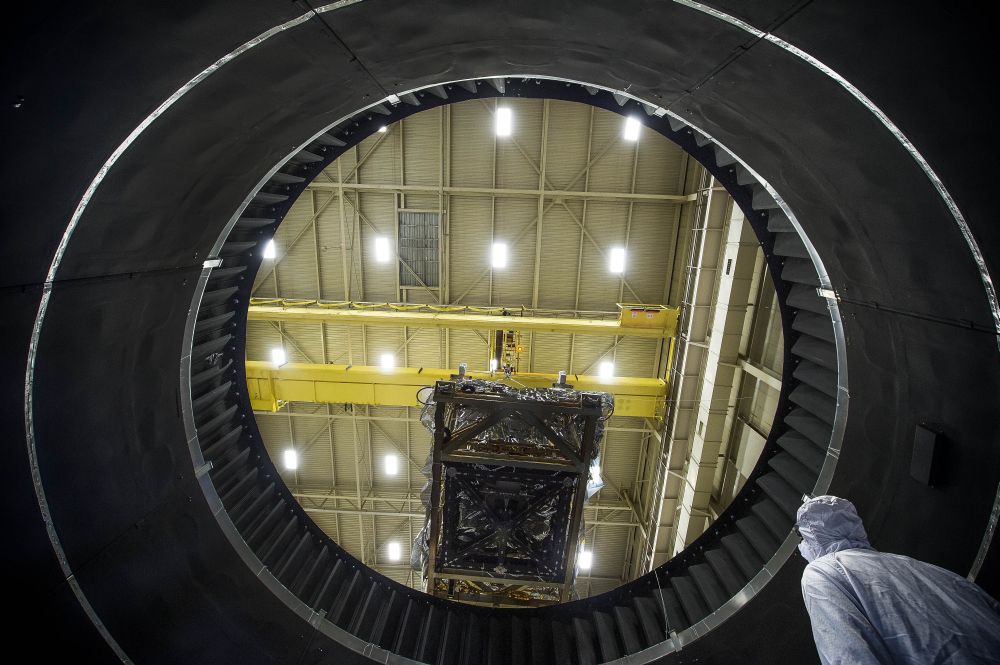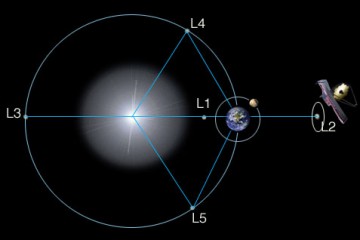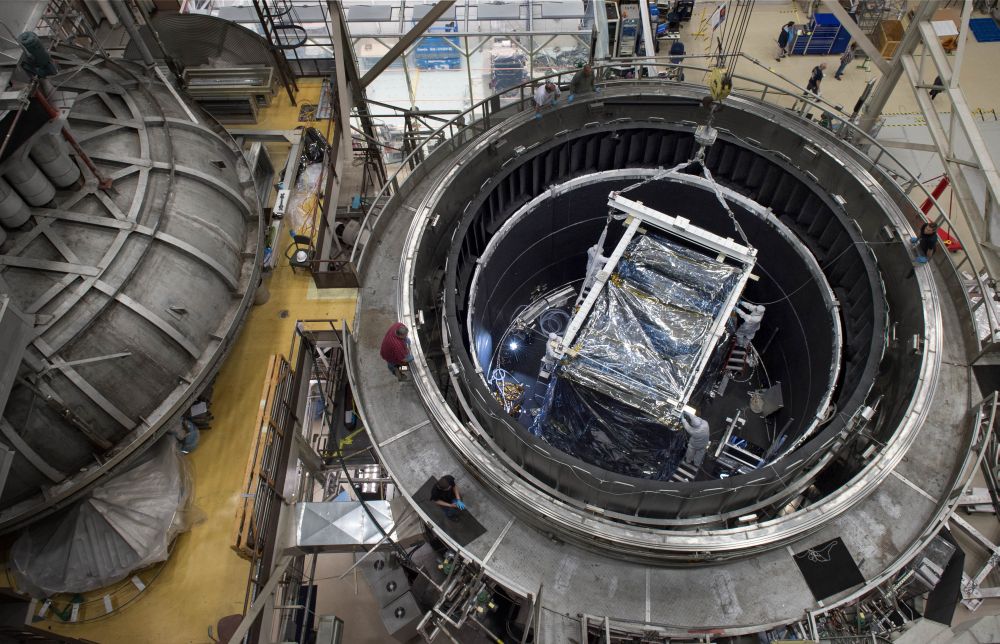
Recently, what has been described as the “heart” of the James Webb Space Telescope (JWST)—the Integrated Science Instrument Module (ISIM), which contains four essential science instruments—underwent and survived a “deep freeze” test inside a thermal vacuum chamber located at Goddard Space Flight Center in Greenbelt, Md. The integral component spent 116 days within the chamber, meant to replicate the harsh conditions the space telescope will undergo as it will be deployed to an environment considered extreme, even for space. This test occurred during the summer months. In July, NASA announced that testing was completed on the telescope’s backplane structure; the completion of these tests are milestones for those working on the project.
The JWST, an international collaboration between NASA, the European Space Agency (ESA), and the Canadian Space Agency (CSA), currently slated for a 2018 launch, has been described as being the nearly 25-year-old Hubble Space Telescope’s (HST) “scientific successor.” While the HST has uncovered countless discoveries about our universe, the JWST is meant to “reveal the first galaxies forming 13.5 billion years ago” and “will also pierce through interstellar dust clouds to capture stars and planets forming in our own galaxy,” according to NASA.

While the JWST will observe infrared light coming from very distant objects in space, there are many different objects that emit infrared light. This is why, according to NASA, the space telescope must operate in an environment that is very cold, blocked from light coming from the Sun, Earth, and Moon. To accomplish these feats, the space telescope will have to operate in a “halo” orbit at the L2 Lagrangian Point, which lies some 1.5 million kilometers (approximately 930,000 miles) from Earth. In contrast, the HST, commissioned in 1990, orbits the Earth at a distance of 570 kilometers (354 miles), and was deployed and serviced by space shuttles.
This brings us to why and how the JWST components were sent into a “deep freeze” during the hot summer months. ISIM Lead Integration and Test Engineer Mike Drury related the importance of such extreme testing: “The heart of Webb called ISIM is a very important part of the observatory and will provide all of Webb’s images,” he divulged. This elephant-sized component was carefully lowered into a massive thermal vacuum chamber called the Space Environment Simulator (SES). There, NASA stated, “This 40-foot-tall, 27-foot-diameter cylindrical chamber eliminates the tiniest trace of air with vacuum pumps and uses liquid nitrogen and even colder liquid helium to drop the temperature simulating the space environment.”
Webb’s deputy project manager, Paul Geithner, described why the component was subjected to such thermal stresses prior to launch: “We complete these tests to make sure that when this telescope cools down, the four parts of the heart are still positioned meticulously so that when light enters the telescope we capture it the right way. The biggest stress for this telescope will be when it cools down. When the telescope structure goes from room temperature to its super cold operating temperature, it will see more stress from shrinkage than it will from violent vibration during launch.”
The ISIM possesses four science instruments: the Near InfraRed Camera (NIRCam), the Near InfraRed Spectrograph (NIRSpec), the Mid-InfraRed Instrument (MIRI), and the Fine Guidance Sensor/Near InfraRed Imager and Slitless Spectrograph (FGS-NIRISS). Engineers and scientists from all four instruments’ teams were on hand during the test to monitor systems.

Alistair Glasse, instrument scientist for MIRI, likened the process to being “kind of like having a car in a garage in the winter.” ISIM Lead Systems Engineer Ray Lundquist described how even outside weather can affect conditions inside the sensitive chamber. During the summer months, sometimes weather can be touch-and-go:
“The weather this year was phenomenal for the test. When the weather is bad, when it’s humid and when it gets stormy, that’s when we run into problems with the chamber. At the beginning of the test, we had a couple of storms and the building got hit by lightning that shut the whole system down for 30 minutes, but since that storm we have had really great weather,” he enthused.
While this round of “deep freeze” systems testing involved full cooperation from all four instrument teams assigned to the “heart” of JWST, the space telescope’s launch and operation will provide further opportunities for international cooperation. In 2018, JWST is scheduled to launch aboard an Ariane 5 launch vehicle from Arianespace’s ELA-3 launch complex at the European Spaceport in Kourou, French Guiana. It will take approximately 30 days for the space telescope to make its way to the L2 point.
The most powerful space telescope to ever be launched, the JWST will follow in the footsteps of its “grandfather” Hubble as it will undoubtedly reveal new truths about where we originated in the universe, and where we may be going.
Be sure to “Like” AmericaSpace on Facebook and follow us on Twitter: @AmericaSpace
.
Missions » James Webb Telescope »


